My Connection to Salsa
Salsa, the music and dance, not the condiment has been a love of mine since the mid 60’s. In fact, it wasn’t until high school that I ever experienced the culinary sauce. I grew up in Boston where Mexican restaurants weren’t popular, especially during the era I lived there; but salsa music was.
How I loved listening to Latin Jazz and salsa as I was growing up. As I walked down the streets of my neighborhood or sat on the stoop, especially during warm weather, I could hear the music coming from the
The Musician
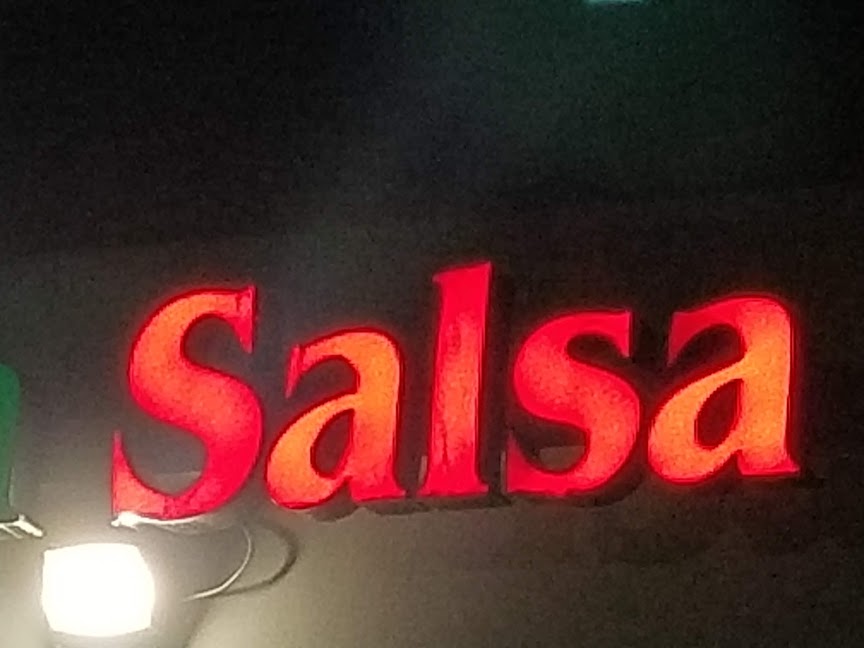
Growing up, one of my favorite Latin musician was Celia Cruz. Not only did I love her voice and her music, I loved her “style” When I looked at pictures of her, I saw vibrant colors, sometimes from head to toe. She rarely looked the same; although flamboyant, it was evident she was “comfortable in her own skin.” In addition to her style, I loved her story. When I found out that her father wanted her to be a teacher and that she actually attended a teacher preparatory institution before leaving to pursue her dream of being a vocalist, I developed another level of respect for her. I was also impressed that it was a teacher who encouraged her to use her talent and pursue a career in music.
Reading about Celia Cruz: The Books
Brown, Monica, and Rafael López. My Name Is Celia: The Life of Celia Cruz = Me Llamo Celia : La Vida De Celia Cruz. Flagstaff, Ariz: Rising Moon, 2004. Print.
“Go out into the world and sing, my child–you will be known across the land! Your voice is a gift from above and must ring sweet in the ears of our people!”
As an educator, the quote that opens this post is that of Celia’s favorite teacher. Whenever I learn that a teacher’s influence impacted the success of a student, it never fails to remind me of the influence that teacher have on their students. Celia did that as soon as an opportunity presented itself. She embraced the opportunities, even when the challenges were great.
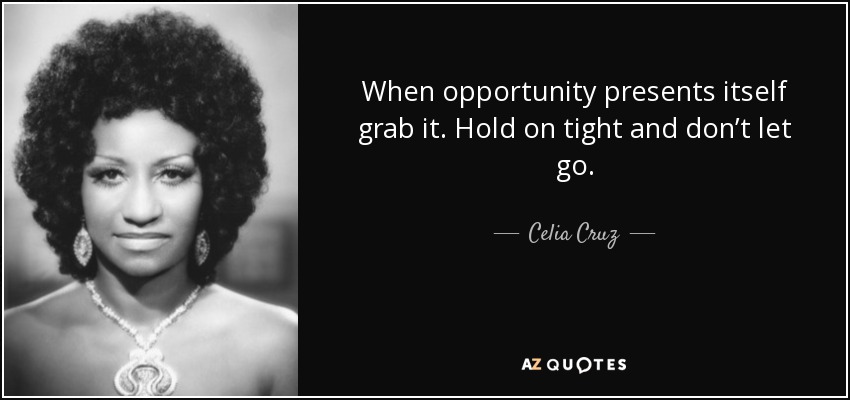
https://www.azquotes.com/author/24040-Celia_Cruz
This post was inspired by Celia Cruz’s story, her life and style. The five books that I spotlight and use as the catalyst for engagement and connections each bring a different perspective to Celia’s story. I think one of the most prominent theme is that of loving yourself and celebrating your individuality. Also important as a theme is that of being persistent in your efforts to realize your dreams while being resilient when obstacles are placed in your path.
As stated, the music of my neighborhood was sweet and sugary as in
azúcar; hot, intimate and full of heat as in caliente; and hot and spicy as in picante. Although not food, salsa music still evokes the senses. In my Roxbury Crossing neighborhood between Mission Hill, Jamaica Plain and Boston’s South End if you sat and listened to the Latin jazz you would not only hear the music, but also feel the rhythm. The smell of Latin cuisine coming from the the homes, bodegas and restaurants would add the extra sense. If at a gathering, a party or a festival the tastes that you would experience and possibly be recruited to prepare would definitely enhance your visual, auditory, kinesthetic, tactual, and olfactory experience with the music.
The bilingual English/Spanish children’s picture book biography, My Name is Celia/Me llamo Celia written by Monica Brown and illustrated by Rafael
López is a great introduction to the famous Cuban singer, Celia Cruz and her life. The main character, Celia, is a young girl in Havana, Cuba. It vividly, with words and illustrations, chronicles her childhood in Cuba, her musical career and the joy she and her music brought to her communities and her dreams. The book does a beautiful job of taking us on Celia’s journey from Cuba to Mexico to New York to Miami and her dreams and her role in creating the music we know as salsa. The imagery both by author and illustrator is breathtaking. In the first paragraph, author, Monica Brown writes:
“Open your eyes. My costumes are as colorful as my music, with ruffles, beads, sparkles, and feathers. They shimmer and shake as I move my graceful arms and legs to the beat of the tropics and the rhythm of my heart.”
Brown, Monica, and Rafael López. My Name Is Celia: The Life of Celia Cruz = Me Llamo Celia : La Vida De Celia Cruz. Flagstaff, Ariz: Rising Moon, 2004. Print.
Engaged & Connected
This introduction to Celia is a great foundation to talk about not only who she is, but who she really is. In that first page you learn that where she is from is very important to who she is. As a great connection activity, students can write “I Am…” or “I Am From …” poems about themselves or about anyone else, including someone being studied; an
My daughter wrote the next two biopoems when she was in 2nd Grade. The second one was published in Mercer University’s College for Kids’ Budding Author Program. Mercer University Douglas County Regional Academic Center Budding Authors 2004, p. 13. Macon, Georgia: Mercer University Copy Center (2004); Roswell, Georgia: The National Library Bindery Company. The third poem is a poem using the past tense.

Remel Who is happy, nice, and helpful, Who is sister of Trey, Who loves her family and books Who feels loved, who needs more books, Who gives happiness, Who fears spiders, snakes, bees, and wasps, Who would like to see Disney World Who shares her love of books with her family, Who is resident of Georgia, Williams.
Remel Who is fun, glad, and silly, Who is sister of Trey, Who loves pets and animals, Who feels glad, Who needs love, Who gives friends, Who fears nothing,, Who would like to see cousins, Who shares her toys Who is a resident of Douglasville, Williams.
She Who Was Celia
Celia Who was colorful, flamboyant, and fun, Who lived with her parents and thirteen brothers, sisters and cousins , Who was mother of Isabella, Juliana and Santiago Who loved her homeland of Cuba, singing, dancing, and traveling Who dined on beans, rice, plantains, and sugary cafe con leche, Who felt happy, who needed acceptance and respect, Who gave and still gives joy, Who feared nothing, Who wanted to see the world, Who shared her talent, music and voice, Who was from Cuba, Who left Cuba because of the revolution, Who used to lived in Havana, Mexico, and Miami, Who was a resident of New York, Who became famous, Who used ¡Azúcar! as her signature greeting, Who was named the Queen of Salsa, Who died in New Jersey on July 16, 2003m Cruz
The following is my “I Am From…” poem:
I Am From Boston

I am from Boston. I am from a mixed Black and Puerto Rican barrio. I am from Roxbury Crossing. I am from between Jamaica Plains, Mission Hill and South End. I am from Dorchester. I am from family and friends.
I am from Pork and Beans and Rice. I am from warm cornbread and milk. I am from salmon and rice. I am from fried fish on Fridays. I am from fried chicken, pork chops, macaroni and cheese, collard greens, and potato salad. I am from the place of large seafood platters, clams with bellies, Ugi’s pepper steak subs, Mike’s rum cakes and cannoli, and Haymarket Square thing pizza.
I am from a home that smells like plastic on the furniture. I am from a home that smells like shellac on the wooden floors. I am from a home cooked scented home. I am from clothes drying on the line, smelling fresh and clean. I am from a barrio with the delicious smell of cultural food. I am from a street with a pickle factory on one end emitting its strong odor, especially in summer.
I am from a home that tastes likes home cooked meals, desserts from scratch, and homemade lemonade. I am from a home that tastes like love. I am from tasty cultural treats. I am from fresh food grown in a city garden in an abandoned lot. I am from food canned for the winter.
I am from a barrio that sounds like Latin music, jazz, R&B, spirituals, and blues. I am from a home with lots of emotions. I am from a neighborhood that speaks in Spanish, English and Spanglish. I am from a barrio that speaks, sings, argues and loves with the sounds of emotions. I am from a house facing a park with bouncing basketballs, squeaky swing chains, and people jonesing each other. I am from a house 10 feet from the railroad track with trains passing by. I am from neighborhood with people loving, children crying, people fighting, car horns blowing, and people talking.
I am from a barrio where families keep me smiling with the tastes of arroz con pollo, asopao, and arroz con gandules, and sorrulitos. I am from the barrio where chuletas seasoned well with garlic and where sofrito is a little taste of heaven on earth. I am from the barrio where friends are family. I am from the taste of empanadillas, tripletas, tostones, amarillos and maduras. I am from the barrio where I am comforted by pasteles, mofongo, pollo guisado and bacalao. I am from my community where special events are served up with lechón asado, pernil, pasteles and tembleque. I am from my barrio.
I am from a house with a fire escape that sits against the train tracks. I am from a place of multi-family homes, high-rise projects with out of order elevators, and brick tenements. I am from a house where I sit on the fire escape watching the traffic and trains passing, waving at those lucky to go somewhere.
I am from the long gone, demolished by fire, Edward Everett Elementary School. I am from Asa Grade Elementary School that in an emergency, accepted us. I am from Sarah E. Greenwood Elementary where I moved in fifth grade. I am from Maurice J. Tobin Junior High. I am from Jeremiah E. Burke High School for Girls where I attended for one month. I am a METCO student who graduated from Lincoln-Sudbury Regional High School.
I am from the home of the Boston Symphony playing music five miles from my house. I am from the home of the Boston Red Sox playing nearby my house at Fenway Park and the Boston Celtics playing at the Boston Garden. I am from the home of beaches, universities, museums, and lots of colonial history. I am from Boston not far from the North End, South Boston, Chinatown and Cambridge. I am from a city full of culture and opportunities. I am from a place of family and love, I am from Boston.
I am Jean Williams May 16, 2019
More about the Books & The Musician
In “¡Oye, Celia!: A Song for Celia” written by Katie Sciurba and illustrated by Edel Rodriguez, a little girl attends a neighborhood dance party carrying her favorite record and calls out her favorite singer Celia Cruz, the Queen of Salsa by shouting out “Oye, Celia!” The book, in a subtle, but rhythmic shares the history of the Cubans. It connects the blend of the ancestors with the blend of the music and cultures. Sciurba artistically uses a blend of English and Spanish and provides a little be-bop and onomatopoeia to enhance the already beautifully illustrated, rhythmic tribute to Celia Cruz. In the book, a little girl dances and shares with Celia the emotions she hears in Celia’s singing. This is a great book to discuss the emotions that are evoked by things we see, do, hear and experience. A good activity is to play some of Celia’s music before reading this book and ask students to write down any emotions that they feel. I like to turn down/off the lights and have students close their eyes why the music is playing.For those interested in a word wall, the author has included a list of Spanish words. Another activity that can help students connect to this book, is to have them choose their favorite musician and the song that is their favorite. Have them tell who the artist is, what the song is, what they would call out to the singer and what they would say. Using the
Celia Cruz’s biography, ¡Azúcar! written and illustrated by Ivar Da Coll details her life from her birth to her funeral. Unlike the other books featured in this post, Ivar Da Coll uses poetry, humor and his illustrations to capture her colorful and vibrant personality, her style, and in turn, the essence of her life, while sharing with us the important milestones in her life. Although I have the Spanish version of ¡Azúcar! I am told there is an English version. The Spanish version is great for using context to teach/review the present tense imperatives, family members, past participles, object pronouns, preterit and imperfect tenses, colors, rhyming words, prepositions, vocabulary, por vs. para, adjectives, places, idioms and much, much more. Both are great for problem-solving, and sequencing, foreshadowing clues, prediction/interference/forecasting.
For the very young, or for select vocabulary wall words, try the bilingual English/Spanish children’s board book, The Life of /La Vida de Celia by Authors, Patty Rodriguez and Ariana Stein. They use words and phrases to hint at the story of Celia Cruz. Citlali Reyes is the illustrates whose illustrates the word.
Engagement Activity Ideas
Engagement:
- Use The Life of/La Vida de Celia and/or “¡Oye, Celia!: A Song for Celia” to create a word wall.If teaching Spanish, ¡Azúcar! is also great for the creation of a word wall, especially if you have the Spanish version of the book.
- Using the illustrations in the books, students can use the vocabulary they know to describe the pictures. If using the Spanish version with non-bilingual English Speaking children, this would be a good forecasting activities as they would not be able to use most words as a prompt.
- Using maps and globes, have students locate the cities and countries traveled by Celia Cruz on her journey to Miami.
- Play some of Celia Cruz’s music and/or videos.
- Set up learning center(s) focused on Celia Cruz
- Use the books to teach English-speakers the Spanish words and if applicable, the ELL students can associate the English with the Spanish words.
- Play a Celia song and inquire as to what emotions, feelings, thoughts are evoked when listening to Celia.
- Use My Name is Celia/Me llamo Celia as an example of how similes are written.
- Use My Name is Celia/Me llamo Celia as a guide to descriptive words.
- Read My Name is Celia/Me llamo Celia and ask students to note multisensory words that illustrate words that represent auditory, visual, tactual, olfactory, gustatory, and kinesthetic senses.
- Have students create a Celia Cruz “I am…” or “I am from…” poem.
- Show images of Celia Cruz’s, especially her aesthetic style: hair, clothing, etc. There is an abundance of visual resources on the internet.
- Put a copy of 4 of the books in a corner, rotate groups of students to each corner where they will read the book, listen to the book being read or respond to the book (as a review or to the illustrations); in each corner put post-its, a chart or a dry-erase board. Students, as a group, will respond to the book; tell what they like about the book; outline important details; tell what they learned; list newly learned vocabulary; or describe Celia, based on the book.
- Have students compare and contrast one or more books after reading the books or listening to the books. Great to do as a summary to the Four Corners activity mentioned above.
Ideas to Connect the Books to Learning
Connections:
- Have students research their family origins.
- Brainstorm greetings that people use to get a person or group’s attention. Ask why they think Celia Cruz used ¡Azúcar! as her signature greeting.
- Have students share their dreams. If old enough, have them make a plan to help them achieve the dreams.
- Have students create a tribute for their favorite singer.
- Introduce or review onomatopoeia and be bop and the relationship it has to My Name is Celia/Me llamo Celia.
- Have students create their own “I am…” or “I am from…” poem. It is a great tool to get to know students at the beginning of school year, new semester, or new year. Actually, good any time.
- Create your own poem using synonyms for what your home represents to you. Think about memories your home makes for you. Think of the sights, sounds, smells and tastes that remind you of your home.
- If teaching Spanish, My Name is Celia/Me llamo Celia is a great book to teach the preterit and imperfect tenses in context.
- Teach merengue, salsa, samba, and rumba dances.
- Discuss Celia’s relationships with other artists.
- Discuss the difficulties Celia experienced, especially as it relates to prejudices and discrimination.
- ¡Azúcar! The Life and Music of Celia Cruz highlights important moments in Celia’s life and career. The author and illustrator uses photographs, personal documents, costumes, videos, and music to portray her life and her life. Have students reflect on their life and use realia to illustrate their lives. They can use photos, documents, clothing, digital images, music, and whatever else they can. If you don’t have time for all to share with the class, create groups of 3-5 and have them share with the groups, then let groups choose one to share with the entire class.
- Divide class in groups and create a Celia Cruz scavenger hunt (can include miniature/toy items, pictures, etc…if seeing who gets more points…give 2 points to the actual item/replica) which might include:
- A picture of Celia Cruz
- A Cuban Flag
- Music by Celia Cruz
- Drum
- Maracas
- A Guitar
- A Mexican Flag
- A USA Flag
- Sugar (packet, bag)
- Calendar
- Train
- Tea bag
- Sugar cane
- Airplane
- Bus
- Something symbolizing marriage
- Candle or picture of the Virgin of Copper/Virgen del Cobre
- Hershey kiss (representing a kiss)
- Shoes without heels
- A picture of one of her outfits
- A picture of one of her non traditional hair style (could be the color)
- Have students create a 4-8 page scrapbook layout based on Celia Cruz’s life. Once they are completed, have students organize their pages in a scrapbook album
- Using images, compare and contrast the style of Celia Cruz with Liberace, Elton John and/or Cardi B. It takes the “weirdness” of the past artist to the pop culture of Cardi B. I suggest using 3-5 for each to capture the true essence of their eclectic styles. In the book
¡Azúcar! the author includes pages illustrating some of her heelless shoes, some of her thousand outfits and some of her hundreds of hair accessories and wigs. - Write a Simile Poem about how Celia Cruz is like Cardi B.

Cardi B 
Elton John 
Liberace 
Celia Cruz 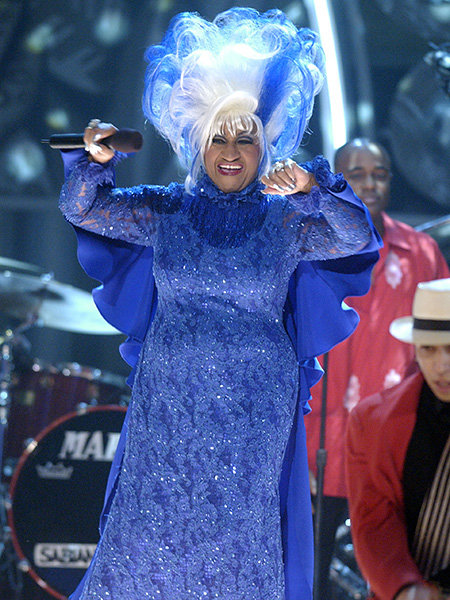
Celia Cruz 
Celia Cruz
Resources
- Life and Music of Celia Cruz, Smithsonian Institute: National Museum of American History
- Celia Cruz Hispanic Heritage Craft Activity: https://www.teacherspayteachers.com/Browse/Search:celia%20cruz
- Celia Cruz Interactive Notebook Activities
- New Curriculum on Celia – Designed by Américas Award judge and multicultural educator, Linda Kreft.
- Tools for Teachers (doc) – Created by Northland Publishing
- Salute to the Queen of Salsa


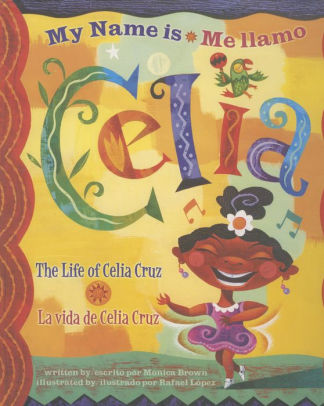
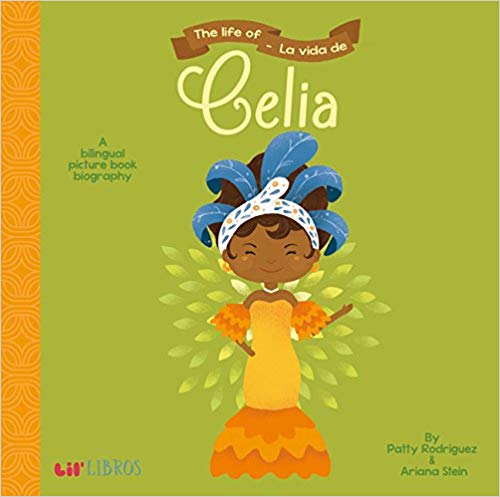
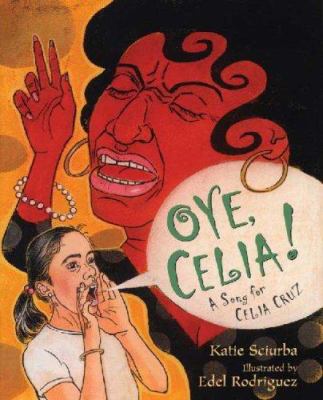
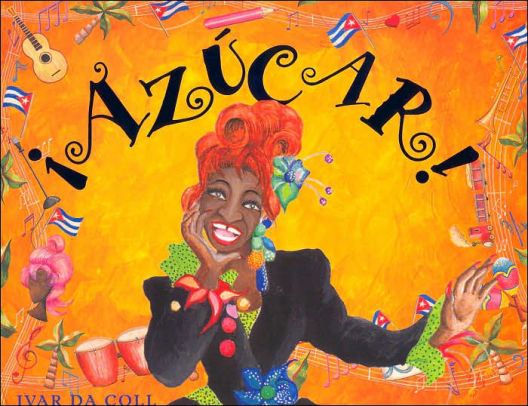
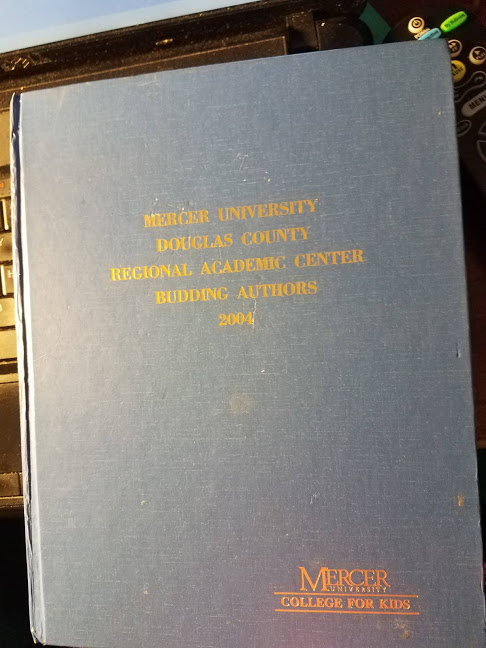
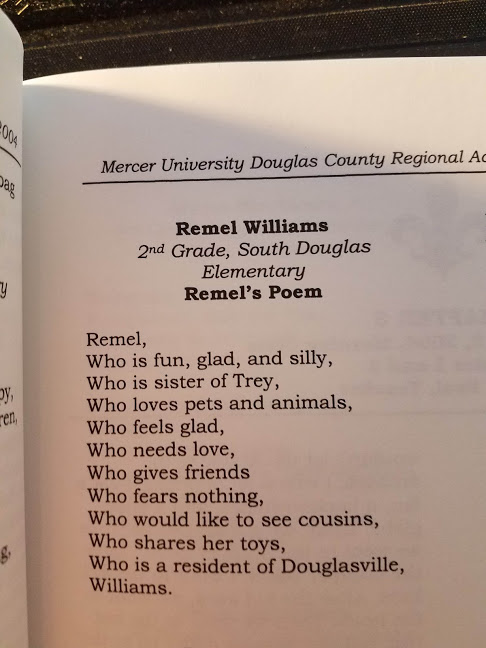
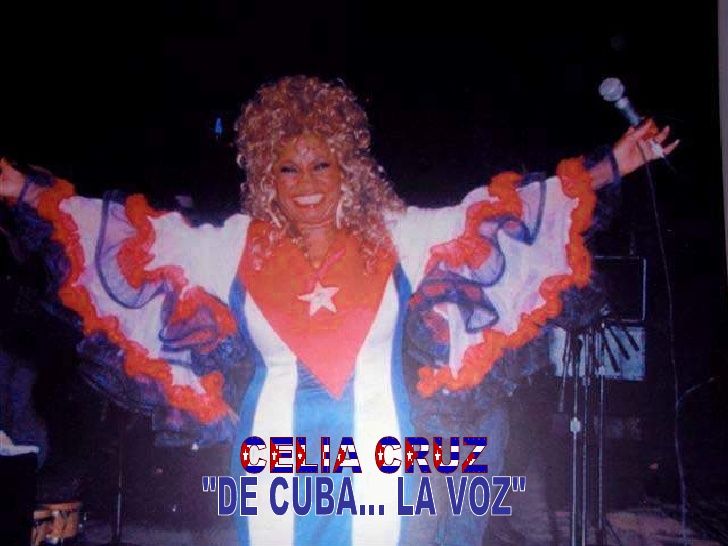


Hello. I have checked your literarilymyway.com and i see you’ve got some duplicate content so probably
it is the reason that you don’t rank hi in google. But you
can fix this issue fast. There is a tool that generates content like human, just search in google: miftolo’s tools
Oh my goodness! Amazing article dude! Thanks, However I
am going through issues with your RSS. I don’t understand why I can’t subscribe to it.
Is there anybody getting identical RSS problems? Anybody who knows the answer can you kindly
respond? Thanx!!
Hello, glad you enjoyed the article. Thanks for stopping by to read. As of today, I have not heard of any other subscription issue. If you can’t subscribe when it pops up at literarilymyway.com, try https://literarilymyway.com/engage-in-and-connect-with-our-reading-community/ you can also subscribe via facebook at http://www.facebook.com/literarilymyway by clicking on the join my list link on left hand side of the screen. BTW, I am a female Jean, lol.
The https://literarilymyway.com it’s one of the best sites I’ve ever seen, and the I like My Salsa Picante con Azúcar article is
great.
A simple way to become a singer without private lessons and wasted time can be found here: https://bit.ly/BecomeaSinger
Many kisses to all! Keep it like this! 🙂
Thank you for your comments. I am glad you enjoyed the article and although I don’t sing well, I always respect those who can.
Like!! I blog quite often and I genuinely thank you for your information. The article has truly peaked my interest.
Glad your interest was peaked and that you commented..
Excellent post! We are linking to this great content on our site.
Keep up the good writing.
Thank you.